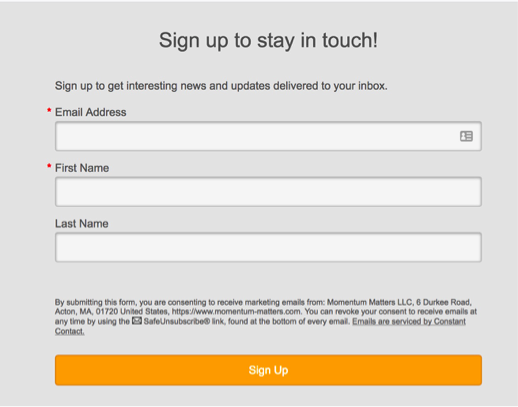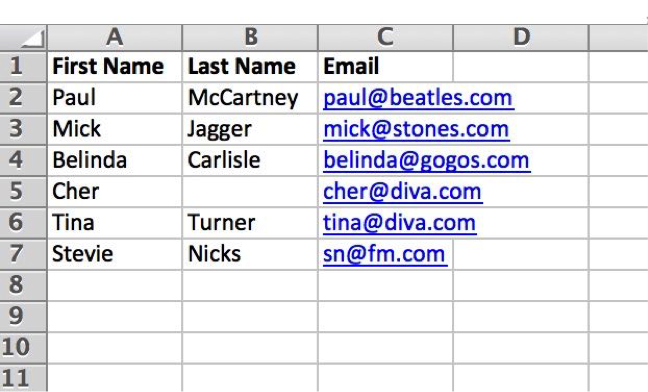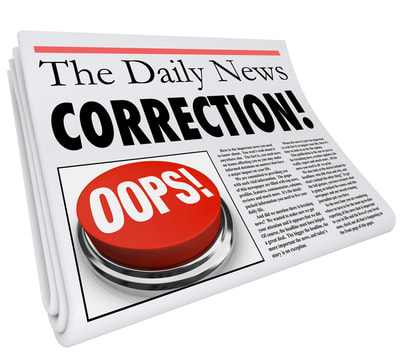|
One of the most valuable assets your business has is your client list. Another valuable asset is your list of prospects and leads. If you run a nonprofit, your key lists are your volunteers and donors. Perhaps you organize a club or civic organization and have a membership list. Maybe you run an event such as a road race, crafts fair, or festival where you draw participants from neighboring towns. For business people, in addition to clients/customers you want to keep track of the people who ask you to bid on jobs, retain your services, visit your place of business, call you about future work, and the people you meet at networking events, conferences, classes, and social events. All the people you interact with represent opportunities: future clients, customers, members, volunteers, donors, or participants in your next event. Do you have their contact information? Specifically, are you asking people for their emails? And for permission to add them to your mailing list? Is this information in a stack of registration forms? A heap of business cards? Scribbled on note paper? Do you have this information in a database? Are you keeping your database (or lists) up-to-date? If you are one of my clients (or if you’re savvy enough to realize that there is a better way than cutting and pasting emails), you have an account with Constant Contact, into which you (or I) imported your list of contacts into one or more lists. After that initial setup, you are still collecting emails—right? When you get an email, what do you do with it? Let me rephrase that, what SHOULD you do with it? How to update your mailing list 1. Automate the work! Collect emails from visitors to your website or business Facebook page. If you’re one of my clients, I set this up for you when you came on board. The emails are automatically added to your list in Constant Contact or MailChimp. A signup form Click “Join My List” on Facebook to reach a signup form 2. Create a spreadsheet (using Google sheets, Excel, Numbers) with separate columns for first name, last name, email, and any other information you care to save, such as birthdays to mail greetings and/or a special offer on their birthday month. A spreadsheet with separate columns for each type of data 3. Download and use the Constant Contact app to snap a photo of their business card. The apps for both Constant Contact and MailChimp let you type in contact information one at a time. Both of these apps are useful for capturing info on the fly. The Constant Contact app 4. Use the Constant Contact text2join feature. People can send a text using your keyword and then are automatically added to your list. The Constant Contact Text2Join feature 5. Enter the contacts in your CRM or bookkeeping software, from which you can export emails as .CSV or .xls files and import them into Constant Contact or MailChimp. I will help you set up whichever of these tools you prefer. Just ask. What you must NOT do is let your mailing list stagnate.
One of my gym buddies called me an ‘opsimath.’ He told me what it meant, but I looked it up anyway. (Once an editor, always an editor.)
Not long ago, I embarked on my fourth career, one that requires me to learn new things every day, so yes, I’m an opsimath. A recent interview triggered some reflection on my career path, which I’ll share with you. My careers all have had these traits in common:
Career #1: Education After college, I taught English as a Second Language, ESL (the precursor to ELL) for 3 years while earning my Masters’ degree in Education. Teaching, of course, was not a new field, but ESL as a specialty, was relatively new. In addition to teaching, I wrote a handbook and other materials for classroom teachers with suggestions for helping their non-English-speaking students to succeed. This was my first foray into professional writing. Career #2: Technical Editing & Writing In the late 1970s, I joined the then-booming field of software technical editing and writing. Yes, the field of technical writing existed when I was in high school, but it was mainly writing for military contractors (“mil spec”). The computer industry was still young and personal computers hadn’t yet been birthed, let alone mobile phones, tablets, and their apps. I learned about editing, computers, and a wide range of software products. I held several positions and titles over a 25-year period, including Principal Technical Editor, Documentation Manager, Usability Engineer, and Software Documentation Architect. Regardless of the title on my business card, the work I performed was all about sharing information with other people. I also wrote a book about technical editing that is still in print and in use as a college text after 26 years, taught workshops throughout the US, participated in panel discussions at professional society meetings, and gave keynote lectures. I taught technical writing in a special post-graduate program at a local college. I also ran a consulting company, first with some colleagues and I later branched out on my own. Career #3: Fitness Instructor/Personal Trainer In my spare time, I transformed my life through fitness. I studied and got certified as a personal trainer. Fitness was a hobby that generated enough income to cover its own expenses (teaching materials, insurance, certification and continuing education). The next chapter was a brief early retirement, spent mostly on volunteer work. I did a lot of writing and editing as part of that work, including writing, designing, and maintaining a website for a nonprofit (a dog breed rescue). I also wrote another book. When it was time to return to paid employment, I chose not to return to the 80-100 hour work-weeks of high tech that had burned me out. At the encouragement of one of my group fitness students, I started a career as an in-home personal trainer. Many people know me only in that capacity, so were probably shocked when I announced Career #4, even though it was a return to my writing roots—just with different media. Career #4: Email Marketing and Social Media In addition to training fitness clients, I was running my own fitness business, including doing my own marketing. Along the way, I learned how to use LinkedIn, Facebook, Twitter, Pinterest, Instagram, MailChimp, Constant Contact, and a bunch of social media management tools. Did I mention my geek streak? I like learning new software and have a good track record of getting up to speed quickly. (My secret: I actually read the documentation!) Once upon a time (Career #3), I learned computer programming, since in that job I was editing programming language manuals and needed to understand what I was reading as well as to be able to test the coding examples. A couple of years ago, a colleague from a networking group I belong to asked if I had time to help with sales and marketing support for her payroll company. It was my seasonal slow period, as most of my fitness clients were away for summer vacations. I’ve continued working for her a few hours a week, producing her monthly client newsletter, writing direct mail campaigns, and setting up and managing her business social media accounts. Before long, another colleague from the same networking group asked if I could write newsletters for his clients. And then another. And another. And another. Before I knew it, I had a side business going. I liked that I could work at home on a flexible schedule. I took the plunge in February, turning away new fitness clients and focusing on growing my email marketing and social media business. Business has been very, very good, thanks to referrals from satisfied customers. This will probably be my final career change because it pulls together so much of my experience and steadily presents new challenges to keep me interested. Take-Away Points
Someone who learns late in life. An opsimath. I am one. Are you an opsimath? Share your story on Momentum Matter's Facebook page (facebook.com/mmatters) or in the comments section below. |
AuthorJudy Wolff is a writer, editor, and computer geek. Archives
March 2020
Categories |












 RSS Feed
RSS Feed
